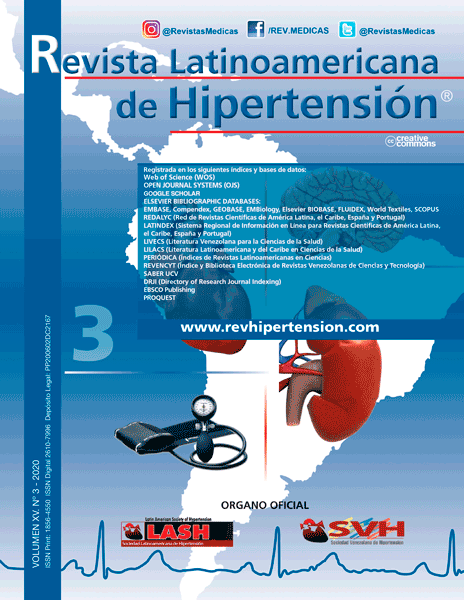Autonomic symptoms in patients with migraine
Palabras clave:
Migraine, Sympathetic, ParasympatheticResumen
Introduction: migraine is a prolonged neurovascular illness. The features by sporadic bouts of acute headache associate with aura or not associated contain various combinations of neurological, gastrointestinal tract, and autonomic variations, with no any indication of main organizational anomalies. Autonomic nervous structure consists of numerous signs and symptoms; nausea, frequent bowel motion, constipation coolness in the upper and lower limbs, tachycardia and thoracic pain. The aim of study to evaluate autonomic purposes in patients with migraine and to assess the autonomic loss function either sympathetic, parasympathetic, or a combination of both. Also, to correlate the severity of this dysfunction with age, sex and migraine kind.
Methods: This is a prospective study between May 2009 and May 2019 in the headache clinic at the neuroscience hospital /Baghdad /Iraq. One hundred and twenty person have migraine (84 women and 36 men), the age 15-50 years old, and 60 normal persons as controller collection. The survey paper consist of nervous system debility gauge, cardiovascular reactions examination also done.
Results: patients with migraine have incapacitating bouts are disposed to autonomic nervous organism hypo task, which also is a danger feature for migraine headache, or be a value of common incapacitating bouts. Furthermore, autonomic nervous system loss function and migraine may part a public neural substrate. Rendering to Ewing arrangement of autonomic task examinations, the parasympathetic portion extra exaggerated than the sympathetic portion, significant difference between control group and patients’ group, 27% of patients have positive dysautonomia (>2) whereas (73.3%) patients are normal. Tachycardia besides postural faintness are the best recurrent indications in patients have migraine. Migraine and Autonomic abnormal function is more usual also extend sequence of the disease is powerfully connected with autonomic abnormal function which disturbs parasympathetic portion high than sympathetic, for these reasons the autonomic symptoms should be evaluated when assessing the patients with migraine since most of these symptoms are disabling. Conclusions: In patients with migraine, the evaluation of autonomic functions should be a routine work. The cardiac pulse reaction to powerful breath besides valsalva exercise are humble plus useful to assess the parasympathetic portion of autonomic nervous scheme

